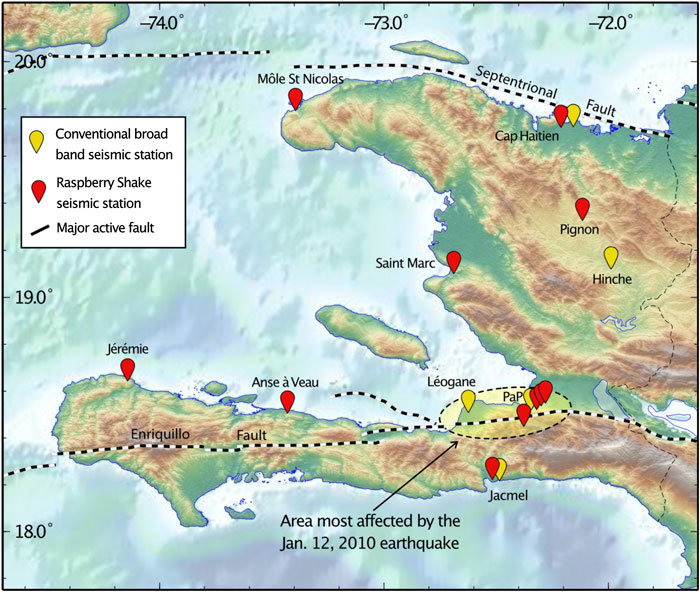A Socio-Seismology Experiment in Haiti
By Eric Calais, Dominique Boisson, Steeve Symithe, Claude Prépetit, Bétonus Pierre, Sophia Ulyse, Laennec Hurbon, Alain Gilles, Jean-Marie Théodat, Tony Monfret, Anne Deschamps, Françoise Courboulex, Jérôme Chèze, Fabrice Peix, Etienne Bertrand, Jean-Paul Ampuero, Bernard Mercier de Lépinay, Julien Balestra, Jean-Luc Berenguer, Remy Bossu, Laure Fallou and Valérie Clouard

ABSTRACT
Earthquake risk reduction approaches classically apply a top-down model where scientific information is processed to deliver risk mitigation measures and policies understandable by all, while shielding end-users from the initial, possibly complex, information. Alternative community-based models exist but are rarely applied at a large scale and rely on valuable, but non-scientific, observations and experiences of local populations. In spite of risk reduction efforts based on both approaches, changes in behaviour or policies to reduce earthquake risk are slow or even non-existent, in particular in developing countries. Here we report on the initial stage of a project that aims at testing, through a participatory seismology experiment in Haiti—a country struck by a devastating earthquake in January 2010—whether public or community involvement through the production and usage of seismic information can improve earthquake awareness and, perhaps, induce grassroots protection initiatives. This experiment is made possible by the recent launch of very low-cost, plug-and-play, Raspberry Shake seismological stations, the relative ease of access to the internet even in developing countries such as Haiti, and the familiarity of all with social networks as a way to disseminate information. Our early findings indicate that 1) the seismic data collected is of sufficient quality for real-time detection and characterization of the regional seismicity, 2) citizens are in demand of earthquake information and trust scientists, even though they appear to see earthquakes through the double lens of tectonics and magic/religion, 3) the motivation of seismic station hosts has allowed data to flow without interruption for more than a year, including through a major political crisis in the Fall of 2019 and the current COVID19 situation. At this early stage of the project, our observations indicate that citizen-seismology in a development context has potential to engage the public while collecting scientifically-relevant seismological information.

FIGURE 1. Map of Haiti showing the main active faults (dashed lines), the area most affected by the M7.1, January 12, 2010, earthquake, the location of conventional broadband seismic stations, and the location of Raspberry Shake seismic stations installed to date in the framework of the project described here.
DISCUSSION AND CONCLUSION
As we initiated this project, it was not clear how easy or difficult it would be to find hosts for RS stations and to maintain their interest over many months, or possibly years. We were also unsure of the benefit of RS stations for earthquake locations and magnitude determination in a variety of noise environments. Although access to electricity and internet can be a serious issue in Haiti, we found a significant number of volunteers motivated to host a RS instrument, even though there is no financial support from our side. The seismological analysis of the RS data shows that more stations would be useful, and that redundancy is important: several RS in the same city, for instance, is not a waste as they may not all be operational at the same time. Also, during the difficult months of October and November 2019, when political instability and insecurity locked-up the country causing schools, universities, and most governmental institutions to close—hence official seismic data streams to stop—data from citizen seismometers were flowing at rate no different from the 6-month average. Citizen seismology can therefore be a viable means to alleviate such difficulties and provide continuity in seismological information even under duress.
As for the usefulness of RS stations to complement the existing—but hard to operate and maintain—broadband seismic network, the above analysis demonstrates that they bring valuable information for real-time detection and characterization of the regional seismicity.
Read the full report and conclusions from Eric Calais, et al. and published at Frontiers in Earth Science.
From all of us at Raspberry Shake we would like to thank each of the authors of this paper.

